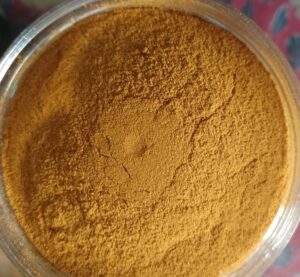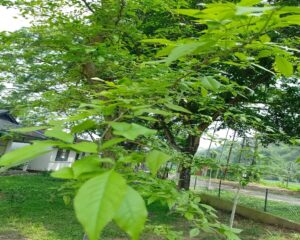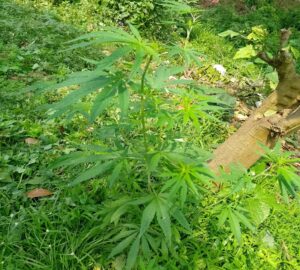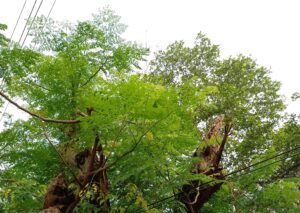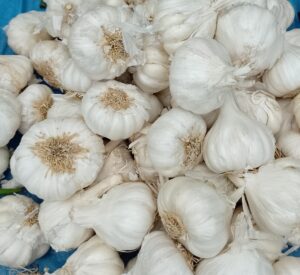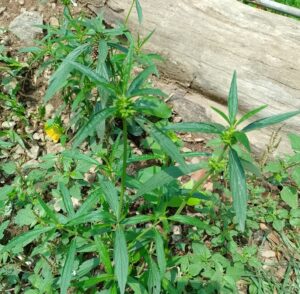Experiences of Use of Ethno-Medicine in Remote Area of Assam and Hyderabad.
Anil Deka
Assistant Professor, Department of Anatomy & Histology, College of Veterinary Science, Assam Agricultural University, Khanapara, Guwahati, Assam and 5. Junior Scientist, Livestock Research Station, Mandira, Hekra, Kamrup, Assam
Corresponding author Email ID: dranilvet01@gmail.com
Introduction
Use of Ethno veterinary medicine is concern to animal healthcare. It is as old as the domestication of various livestock species. They consisted of belief, knowledge, practices as well as skills pertaining to healthcare, and management of livestock sector. The Indian subcontinent has highest percentage of ethno veterinary health traditions that are the products of decades of experiences. The ethnos veterinary medicines that are commonly used for animal healthcare can cut down costs considerably. Moreover, they are easily available to the ordinary farmer. The main challenges are to find out the effectiveness and contemporary relevance of these ethno-medicine. Before the introduction of allopathic medicine, all livestock farmers based on these medicinal practices. Livestock sector play a vital role in the uplift men of rural economy of India. The rural and tribal people are not easily accessible to modern veterinary services for their livestock. They are economically poor therefore they depend upon their traditional knowledge of cure of avian as well as animal. These are cheap, non-pollutant, mix with soil, safe, and easily available compared to the synthetic and modern methods of disease control. According to the World Health Organization, at least 80% of people in developing countries depend largely on traditional medicine for the control as well as treatment of various diseases affecting both human beings, and their animals. The farmer of the Assam uses a variety of plants as well as their products to form indigenous medicines for primary health care treatment and maintaining animals productive. The position of India is 12th in term of Biodiversity and it contain 8% of global plant genetic resources. It harbours a variety of herbal medicines. Ethno-veterinary medicine has discovered through a variety of observations, trials and errors. It passes from one generation to the next generation through verbal communication. Hence, these ethno-veterinary medicines are hardly documented as well as unfortunately largely lost, diluted, and distorted. In ethno veterinary medicine, almost all parts of the plant are used by the farmers like bark, leaves, stem, flower, roots, seeds and fruits. The Indigenous technology knowledge of animal healthcare practices requires great attention for pharmaceutical analysis to prospect new drugs in the concerned field. In the current article the documentation of ethnic practices used in remote area of Assam for livestock treatment has been done. The electronic as well as print databases were searched for the preparation of ethno veterinary practices.
Objective
To explore as well as documentation of usages of ethnoveterinary medicinal plants utilized by rural farmers and forest personals, and traditional herbal healers for livestock healthcare in Sipaghar, Nagaon and Morigaon district, and Khanapara as well as forest personals of Kaziranaga National Park of Assam
Study area:
The area was agro-climatic condition of Khanapara and remote area of Golaghat district of Assam. The second largest national park (Kaziranga National Park) of Assam harbours huge amount biodiversity and medicinal plants which one is situated in Golaghat district. The latitude: 26.575863 and longitude: 93.167046 of Kaziranga National Park. The National Park roughly experiences 3 seasons viz., summer, monsoon and winter. The dry as well as windy summer extends approximately from February to May with mean maximum and minimums of 37 °C (99 °F) and 7 °C (45 °F), respectively. The hot and humid Monsoon season extends from June to September. During the monsoon, Kaziranga receives mean rainfall of 2,220 millimetres (87 in) brought by the South West monsoon. The winter, extending from November to February, is mild and dry, with the mean maximum and minimum being 25 °C (77 °F) and 5 °C (41 °F), respectively (Kushwaha and Unni,1986). The Amchang Wildlife Sanctuary is a wildlife sanctuary located on the eastern fringe of Guwahati, Assam, India. The sanctuary is known for hosting rare and endangered birds and animals (www.nativepanet.com). Amchang’s habitat is dominated by tropical moist deciduous forest with semi-evergreen forest in depressions and river-valleys. The remote area of Sipaghar, Nagaon and Morigaon district of Assam and Ramlingampalli, Hyderabad.
Methods
I was worked in the remote villages of Sipaghar, Nagaon and Morigaon district of Assam, Khanapara near Amchang Wildlife sanctuary and Kaziranga National Park, Golaghat district of Assam for period of five years from 2009 to 2014. During that period, I observed that the rural people use the ethno-veterinary medicine for treatment of animal as well as avian species.
Experiences of Usages of Ethno-Veterinary Medicine:
I observed that when I worked in Hitech Hatch Pvt Ltd as a Technical Manager, I found that the farmer of the breeding farm of Ramlingampalli, Hyderabad used the germinated green gram (Fig.1) along with onion for cock during summer season. They used, this combination to increase the semen volume and quality of semen. The germinated green gram contain vitamin -E and onion has antioxidant properties, and it contain vitamin-C. The broiler poultry farmer used mint (Mentha piperita) (Fig.2) to increase the body weight. They grind the mint and then, mix with water and feed to the broiler birds.
Then, when I Joined as an Assistant Veterinary Surgeon in Centre for Wildlife for Wildlife Rehabilitation and Conservation (CWRC), I got the opportunity of treatment of injured wild sub adult elephant with turmeric powder and coconut oil. I make a past of turmeric powder (Fig.3) and coconut oil as per the information of Mahut of elephant and I applied regularly to the cut mark of the elephant after proper dressing of the wound of elephant. After two month of regular dressing and applying of turmeric powder as well as coconut past, the wound of the elephant is cured. When elephant was musth, some Mahut (elephant rider) used ball of leaves of wood apple (Fig.4) or cannabis (Fig.5) to control the musth of bull elephant. The wood apple prevents the spermatogenesis process and cannabis depress the elephant, when the bull elephant was sexually excited.
I found, when I joined as a consultant veterinary doctor in Lotus Hatch Pvt Ltd, the poultry farmer of the Sipajhar, Morigaon and Nagaon district used ethno-veterinary medicine like local wine, guava leaves, Sajina leaves (Moringa oleifera), neem leaves, clove oils, root of kathenda flower, bark of arjun tree, suthi tenga, tengesi tenga, tulsi, bhutjolokia, bird eye chilli, darun flower, basabtita, bark of bhim kal (banana), garlic, kaskal (raw banana) gilloy juice. The poultry farmer used the traditionally made local wine 10ml /100 birds to control the Inclusion Body Hepatitis (IBH) for five days. Apart from the local wine, they used extract of root of kathenda flower (Fig.6) and extract of ash of bark of Bhim kal (banana) (Fig.7) to IBH. During winter season they provide ram to the broiler birds to get rid of the cool. They used extract of guava leaves (Fig.8) and sanjina leaves (Fig.9) along with milk to control the chronic respiratory disease (CRD). The CRD was occurred mainly in winter season. They also used extract of tulsi(basil) (Fig.10) and basab tita (Fig.11) to control the CRD. When the poultry farmer found blood tinge in the faecal material of broiler birds, they used extract of Kaskal (raw banana) (Fig.12) to control the blood in the faecal material. The extract of this banana has astringent effect. Garlic (Fig.13) has anti-viral property and it contain suffer compound. They used this medicine in viral infection. The powder of neem leaves (Fig.14) along powder of turmeric used for treatment of fowl pox. They used spray the neem oil and clove oil to control the fly. When the bird was suffering from Ranikhet disease, they used extract of suthi tenga and tengesi tenga (Fig.15) to control the stress of disease. They also used the extract of the bhutjolokia (Capsicum annuum) (Fig.16), bird eye chilli and gilloy (Fig.17) juice which boost up the immunity of the birds. Capsicum annuum is rich in vitamin C and E. Various pharmacological properties and some of the clinical applications of capsaicin present in Bhut Jolokia viz., pain relief, anti-inflammatory property, anticancer activity, weight gain in poultry, hepato protective effects, bactericidal effect, cardiovascular activity, antioxidant effects of Capsaicin, antidiabetic activity, anticancer activity, gastric ulcer protective activity and anti-arthritic activity. The darun flower (Fig.18) has antimicrobial property and they used extract of these herbs in fowl cholera diseases. When the broiler was suffering from visceral gout, they used jaggery 10gm/100 birds for five days.
Conclusion
The experiences of practices of ethno-veterinary medicine revealed that the genetic resources of the medicinal plant cannot be preserved without conserving natural habitat of medicinal plants as well as the socio-cultural organization of the local people. The same may be applied to protect traditional knowledge, related to the use of medicinal and other wild plants. Introduction of medicinal plants in government project could be another option for uplift of the rural economy together with environmental conservation, because Assam has huge amount biodiversity along with medicinal plants. But has not received attention in the land rehabilitation programs in Assam.
References
Amchang Wildlife Sanctuary, National Parks in Assam,ww.nativeplanet.com. Retrieved 2019-05-10.
Kushwaha, S.& Unni, M. (1986). Applications of remote censing techniques in forest cover monitoring and habitat evaluation – a case study at Kaziranga National Park, Assam, in, Kamat, D.& Panwar, H.(eds), Wildlife Habitat Evaluation Using Remote Sensing Techniques. Indian Institute of Remote Sensing / Wildlife Institute of India, Dehra Dun. pp. 238-247.
Fig.1. Photograph showing the germinated green gram.
Fig.2. Photograph showing the mint herbs.
Fig.3. Photograph showing the turmeric powder.
Fig.4. Photograph showing the leaves of wood apple.
Fig.5. Photograph showing the leaves of cannabis.
Fig.6. Photograph showing the kathenda flower.
Fig.7. Photograph showing the bark of bhim kal.
Fig.8. Photograph showing the leaves of guava.
Fig.9. Photograph showing the leaves of Sajina.
Fig.10. Photograph showing the leaves of tulsi (basil).
Fig.11. Photograph showing the leaves of basab tita.
Fig.12. Photograph showing the kaskal (raw banana).
Fig.13. Photograph showing the garlic.
Fig.14. Photograph showing the leaves of neem.
Fig.15. Photograph showing the leaves tengesi tenga.
Fig.16. Photograph showing the bhutjolokia.
Fig.17. Photograph showing the stem of gilloy.
Fig.18. Photograph showing the leaves of darun flower.
https://www.pashudhanpraharee.com/rural-backyard-poultry-a-viable-option-for-income-generation/





